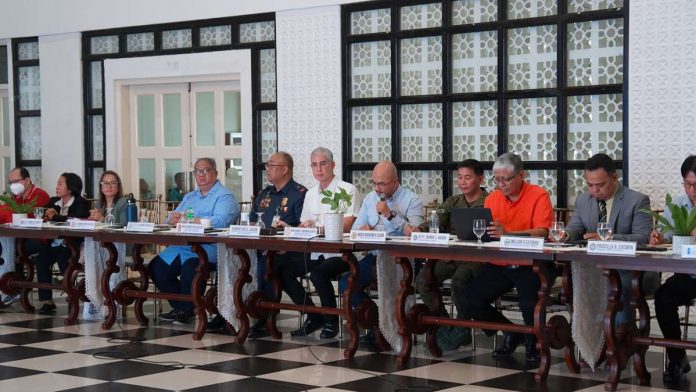
ILOILO – To prevent untoward incidents as the barangay and Sangguniang Kabataan (SK) elections draw near, the Regional Joint Security Control Center (RJSCC) is eyeing to deploy augmentation forces in identified election watchlist areas (EWAs), also called “election areas of concern” or “election hotspots”.
“In the areas nga ma-consider naton nga mainit, we can deploy augmentation forces to preempt whatever untoward incidents,” said Atty. Dennis Ausan, Commission on Elections (Comelec) regional director and RJSCC chairperson.
Augmentation forces may come from the Philippine National Police (PNP) or the Armed Forces of the Philippines (AFP).
On Wednesday, Sept. 13, the Police Regional Office 6 (PRO-6) presented its proposed list of EWAs during the Regional Peace and Order Council (RPOC) meeting hosted by the province of Iloilo at Casa Real de Iloilo.
As of Aug. 8, 2023, there were more than 170 EWAs in the region, said the PRO-6.
But Ausan clarified that those were still subject for validation.
“Proposed lang to, indi pa to gani accurate kay it was dated Aug. 8, long before the filing of COCs [certificates of candidacy]. So, bale damo pa nag-file nga may mga problema sa intense political rivalry nga it could be madugang or it could be mabuhin man,” Ausan explained.
Aside from intense political rivalry, another factor in determining EWAs is an area’s history of election-related violence, insurgency, and the presence of private armed groups.
Final list of EWAs
Ausan said the RJSCC would hold a command conference on Sept. 21 with the other member agencies such as the PNP, AFP, and Philippine Coast Guard (PCG).
At the conference, Ausan will hear the outputs of workshops with different Provincial Joint Security Control Centers (PJSCCs) in the region to determine the different election areas of concern.
“So, let’s just wait kon what the recommendations of the different PJSCCs will be next week,” said Ausan.
Only after coming up with the final list will the areas be categorized based on the intensity of security concerns.
Once the categorization is complete, the RJSCC can determine the appropriate security plan per area.
Areas classified as “green” do not have any security concerns and are considered generally peaceful and orderly amid the polling season.
On the other hand, “yellow” areas are those with some history of violence due to the election or those with intense political rivalry sans the involvement of terror groups.
Meanwhile, “orange” areas are places that have the qualifications to be categorized as “yellow” but experience armed threats from domestic terror groups and other forces.
Those classified as “red” areas have history of violence, existence of political rivalries, and threat of armed terror groups that are recognized by a relevant government agency. This may warrant the area being under Comelec’s control.
“Red category” is the highest classification for election areas of concern.
Also present during the RPOC’s meeting on Wednesday was Provincial Administrator Raul Banias representing Iloilo’s Gov. Arthur Defensor Jr., who is currently on official foreign travel in Japan; Department of Interior and Local Government Region 6 director Atty. Juan Jovian E. Enginerio; PRO-6 director Brigadier General Sidney Villaflor; and Philippine Army’s 301st Infantry Brigade (301IB) commander Brigadier General Michael Samson.
The meeting was presided over by RPOC-6 chairperson and Negros Occidental’s Gov. Eugenio Jose Lacson.
Philippine Drug Enforcement Agency 6 Chief of Operations Christina Cabatingan gave an overview of the illegal drug situation in Western Visayas; Police Colonel Gilbert Gorero, chief of the PRO-6 Operations Division, discussed the peace and order situation in the region; Major Alberto Belingan, 301IB Operations Officer, discussed the insurgency situation in the region; and Ausan presented the preparations for the Oct. 30 barangay and SK elections and related Comelec resolutions./PN





